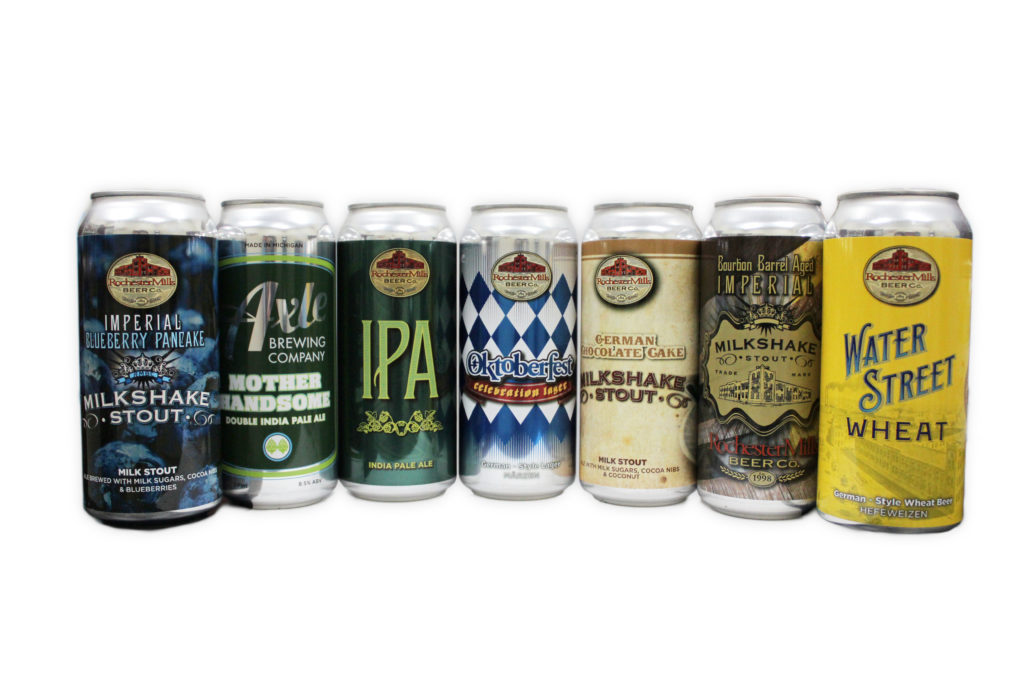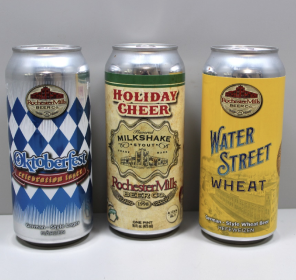Beer Can Labels & Upward Trends
The beer industry has witnessed a significant transformation in the usage of packaging and labeling. Gone are the days when craft beer enthusiasts had to settle for glass bottles and manual labeling due to the prohibitive costs and high minimum order quantities. With hobbyists evolving into full-fledged brewery owners, shelves are now adorned with an array of creatively labeled cans alongside established brands. This offers brewers new freedom and flexibility options and has also influenced consumer choices, driving sales in this vibrant and ever-expanding market.
Beer Can Labels & Upward Trends
Historically, our everyday vessel for our favorite beer came in an aluminum can printed with the mega brewery label. The craft beer hobbyist resorted to glass bottles and hand-labeling on-site. The cost of purchasing printed cans was high, but it was the minimum order quantity that eliminated this as an option for small-scale brewers. Unprinted cans are less expensive; however, the minimums were still quite high for most to take advantage of. Since then, the industry has evolved, and we are all aware of the growing demand for the latest and greatest craft beer.
“Basement Brewers” are opening full-scale breweries and marketing their beer both on site as well as in the retail space. Shelf space is consumed with creative labels and holds its own next to the large name brands. So much so that even the name brand producers have their craft label and keep that home-brewed look; this all leads to the significant upward trend in the pressure-sensitive label market for beer cans.
Learn more about Craft Beers with our in-depth guide
Quick Stats About Craft Beers:
- In 2020, 82% of all beer in the U.S. was produced domestically.
- The beer industry supports 2 million jobs nationwide.
- In 2020, the net worth of the beer industry was $734.84 billion and is projected to grow to $989.48 billion by 2028.
- The global craft beer market is projected to grow from $102.59 billion in 2021 to $210.78 billion in 2028, a growth rate of 10.83%.
Labeling Beer Cans Vs. Pre-Printed
Labeling cans vs. purchasing pre-printed cans gives the brand owner freedom and flexibility. First, there is no longer a need to inventory cans for every flavor manufactured (which takes up warehouse space and money). Inventory levels are greatly reduced by purchasing an inventory of blank cans.
Cans can be pulled and labeled based on sales trends and quickly adjusted when your favorite blend takes off, and sales begin to soar! That is not the time to run out of your pre-printed can. The lead time for pressure-sensitive labels is significantly shorter, takes up less space, and costs less overall! The perfect solution. Secondly, creativity levels run high with the craft beer crowd. Often changing the label on a great blend can drive sales that might otherwise be slowing down; the flexibility to make this change quickly and cost-effectively is provided by using labels vs. stocking large quantities of printed cans. Custom labels can be ordered at the desired quantity and are easy to shelf. This benefits seasonal flavors and promotional products as well. When you create a new design, you want to get it on the can, not wait until you use up all the pre-printed cans you already paid for.
Beer Can Label Materials
Labels can be printed on various materials, depending on your look. The most common material used is BOPP. Labels can be printed flexographically or digitally. Both create eye-catching labels with great color, standout imagery, unique shapes, and surprising textures. Printing options for labels are far greater than printing on the can itself. Why should you care about all of this? 66% of surveyed say a beer’s package/label design is “very” or “extremely” important for them to notice.
60% say it is “very” or “extremely” important in convincing them to try it. Shrink Sleeves are another great option for labeling that gives many of the same benefits. This would be an option if you want to cover the entire can to give it a pre-printed appeal. Sleeves may be faster in the application process; however, they require the upfront capital for the shrink equipment.
Custom Beer Can Labels And Beyond
Custom labels offer a unique branding opportunity, enabling breweries to stand out in a crowded market with distinctive designs and stories. Using custom labeling allows for flexibility in marketing, especially for limited releases or seasonal offerings, enhancing consumer engagement. Custom labels can also reflect the quality and personality of the brewery, building a stronger brand identity. And as noted above, while there might be added costs associated with design changes, custom labels can be purchased in the required amount and are simple to stock, which is advantageous for seasonal varieties and promotional items.
What Is A Beer Can Label Template?
A pre-designed framework that helps brewers create labels for their beer cans, a beer can label template outlines dimensions, text placement, graphic areas, and mandatory information like alcohol content and ingredients. The template streamlines the design process, ensuring labels meet industry standards and branding needs.
Work With Whitlam Today
Cans are becoming the go-to choice for customers. Whitlam Group has the experience and technical skills to help you stand out. Our in-house graphics team can collaborate with you to create the perfect design for your product.


Leave a Reply